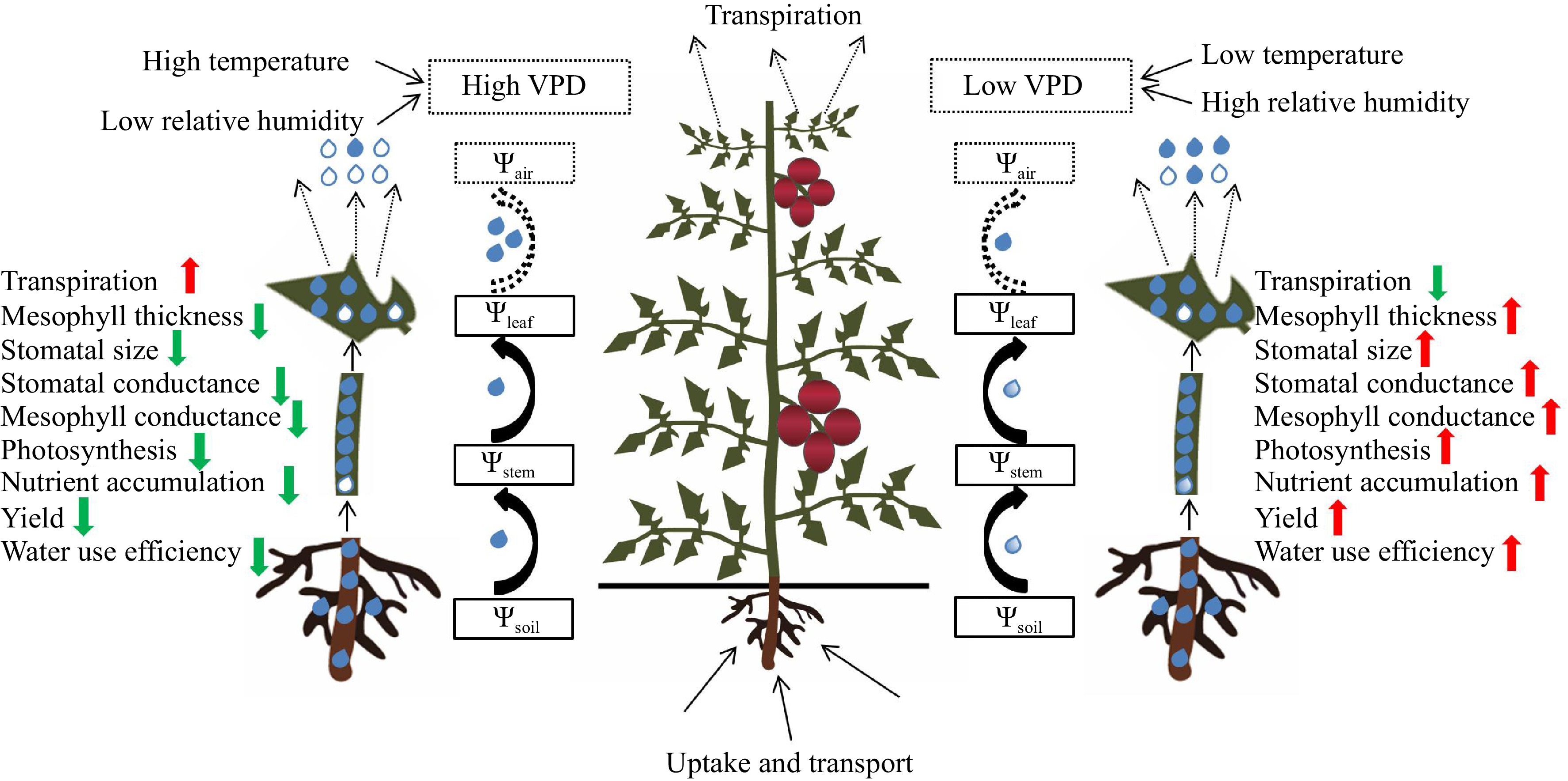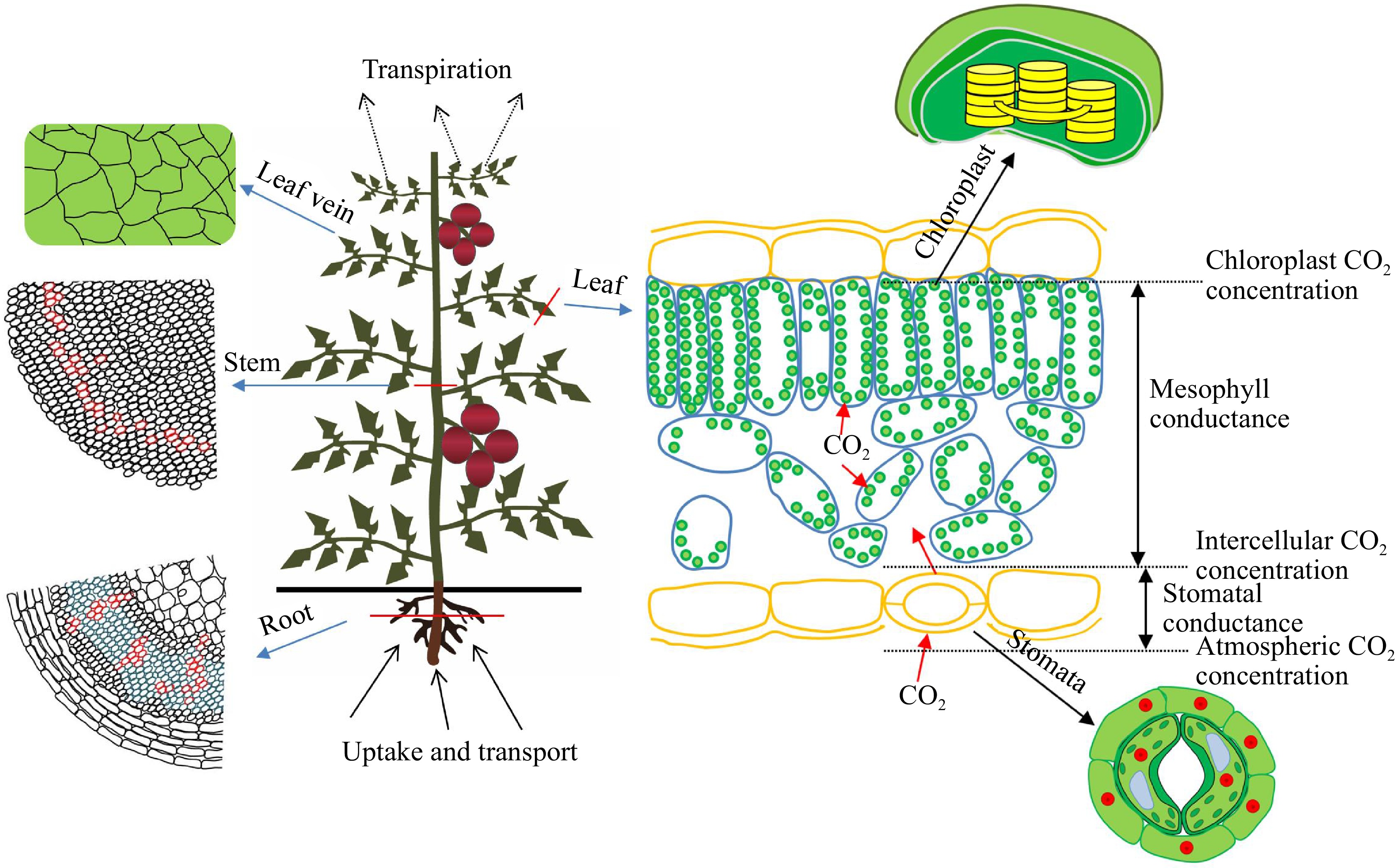-

Figure 1.
Effects of the vapor pressure deficit (VPD) on the regulation of water transport along the soil-plant-atmosphere continuum (SPAC) for vegetable crops, as well as its effects on leaf transpiration and plant behavior (adapted from Amitrano et al.[[13]]). The solid black arrows represent the liquid water transport between the soil, stems, and leaves, and the black dotted arrows represent the gaseous water transport between the leaves and the air. Ψair, Ψleaf, Ψstem, and Ψsoil, represent the water potential in air, leaf, stem, and soil, respectively.
-

Figure 2.
Schematic model for moderating effects of low VPD on water transport by increasing xylem vessel area and leaf vein density and on photosynthetic limitation by decreasing stomatal and mesophyll CO2 diffusion resistance. There are three main processes. (I) Reducing VPD increases the leaf vein density and the cross-sectional area of xylem vessels in roots and stems via the long-term optimization of plant structure. (II) Reducing VPD reduces stomatal resistance and maintains stomatal openness by reducing excessive transpiration and moderating plant water stress. (III) Reducing VPD reduces mesophyll resistance by reducing the average distance from the cell membrane to the outer membrane of the chloroplast and increasing the number of chloroplasts in a single mesophyll cell.
Figures
(2)
Tables
(0)